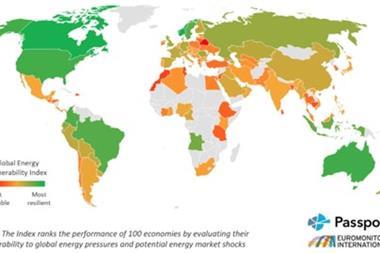If you have been celebrating Gordon Brown's decision to abolish the mandatory Operating and Financial Review (OFR) then it could be time to pause for thought. The full, mandatory OFR may have gone, but the ideas behind it have far from disappeared - if anything they have been reinvigorated by the debate in the wake of the Chancellor's decision. The Government may have decided to run with the less-detailed Business Review, but best practice now seems to firmly rest with the Accounting Standards Boards OFR Reporting Statement.
In the longer term an international initiative could make the UK perspective irrelevant in any case. The International Accounting Standards Board (IASB) has recently closed its own consultation on what it terms 'Management Commentary' - the broad equivalent of an OFR. Based on a 96-page discussion paper, the consultation asked what tack the IASB should be taking in its thinking on narrative reporting. Should it require companies to prepare a narrative report as part of International Financial Reporting Standards (IFRS)? Should that be a mandatory requirement or should it just be non-mandatory guidance? The outcome of this debate will have a significant impact on all EU-listed companies, given that we all now have to adhere to IFRS.
Time to think
The IASB has been thinking about these issues since 2002, when it was proposed that it develop standards or guidance for management commentary. The thinking has been that many national standard setters have their own approach to this issue - the Management Discussion & Analysis in the US, for example, and, formerly, the OFR within the UK - so the IASB should have some form of international equivalent. A project team was set up, and just three short years later the IASB came out with its discussion paper on the issue. (One thing to stress here is that the IASB does not move quickly. Speed is not their thing.)
To be fair to the IASB, it might have been slow but it has done a fairly thorough job. The project team came to the conclusion that the IASB should issue a standard for Management Commentary and then went on to set out a preliminary view of what might be included in such a standard.
Here is where those jumping for joy in the wake of the OFR's demise might need to come down to earth. Many directors in the UK were undoubtedly relieved that they were not immediately obliged to put their necks on the block through forward-looking reporting. Others have been equally overjoyed that they no longer have to scour their companies for some obscure key performance indicator (KPI) that says everything while saying nothing. Yet the IASB's Management Commentary bears many similarities to the UK's OFR standard and would still require companies to act on these points. Two of the six members of the project committee also worked on the OFR Reporting Standard, so similarities were to be expected.
The Management Commentary paper, for example, takes the view that it should be a report directed at providing information to help investors. It goes on to define the objective as being: 'to interpret and assess the related financial statements in the context of the environment in which the entity operates; to assess what management views as the most important issues facing the entity and how it intends to manage those issues; and to assess the strategies adopted by the entity and the likelihood that those strategies will be successful.'
The paper's main principles also tally very closely with those seen in the OFR. The project team came to the conclusion that the MC should:
- supplement and complement information in the financial statements
- provide analysis through the eyes of management
- have an orientation to the future
- be understandable, relevant, supportable, balanced and comparable over time.
These key principles are backed up with content requirements that are even closer to the OFR standard. The MC should provide content that covers:
- the nature of the business
- objectives and strategies
- key resources, risks and relationships (see panel)
- results and prospects
- performance measures and indicators.
It goes on to clarify that it is up to each and every management team to determine how best to present and structure this information. 'Management is in the best position to determine the most appropriate content, including the level of detail, given the particular circumstances of the entity.'
Flexible risk approach
As might be expected, the IASB's discussion paper talks at some length about the presentation of risks and uncertainties. The project team was at pains to point out throughout the document that it did not want to force companies into listing every last risk. 'The intention is not that an entity should provide a list of all of its resources, risks and relationships, but that it should identify and describe those that are critical to the successful implementation of its strategy and the achievement of its objectives.'
It goes on to note that reporting on the risks and uncertainties facing a company - coupled with the managements' approach to dealing with them - is viewed as a critical element of the MC's content. But it stresses that this should not be seen as some tick-box type of list, whereby all boards need to think about environmental, social, community risks and the like. 'The risks facing an entity will reflect its particular circumstances. We do not want MC to present all known risks, since this obscures information.'
As a guide to best practice, one section of the paper suggests that it might be helpful to differentiate between 'key' and 'subsidiary' risks. The key risks should be explained in some detail and set in context relative to the marketplace and their likely impact on the business. What makes them so important to the success or failure of the company? How are the management team controlling the likely impact of such risks? What metrics do they use to measure performance relative to these risks? What factors might impact the relative risk over a period of time? It is by discussing these sorts of issues that the project team feels investors will be able to gain the best possible understanding of what makes the company tick.
Concrete proposals
So when can we expect to see something more concrete from the IASB? Given its past performance that remains uncertain. To date, no firm schedule has been set to take the consultation findings into account and progress towards a standard. Certainly, many see positive backing within the IASB for moving forward on a more detailed approach to Management Commentary. Others fear that it has been downgraded in importance as a result of the IASB's ongoing project to develop a common conceptual framework with the Financial Accounting Standards Board in the US. One thing is certain, we are talking years rather than months in terms of implementation.
The most practical messages at the moment are probably as follows.
- The IASB still seems committed to formalising some form of narrative reporting approach.
- Its current thinking on Management Commentary is strongly influenced by the UK's OFR Reporting Standard.
- This could result in an IFRS but that will be several years away.
One final piece of advice: Do not abandon any work you have done to create KPIs, risk reporting solutions, and so on for the UK's abolished OFR, for this type of reporting remains very much in demand. If your investors do not demand it, then you may still be forced to go down this route when and if the IASB decides to act.
- Richard Carpenter is development director at Radley Yeldar, a communications consultancy that specialises in corporate reporting, E-mail: r.carpenter@ry.com
RISKY CONTENT
The IASB's discussion paper lays out the following content requirements on key resources, risks and relationships:
- Management Commentary should provide a clear description of the key resources, risks and relationships that management believes may affect the entity's long-term value and how those key resources, risks and relationships are managed.
- Management should set out the key financial and non-financial resources available to the entity and discuss their adequacy in meeting its objectives. The discussion of financial resources should supplement the financial statements by including an analysis of the adequacy of the capital structure, financial arrangements (whether on or off balance sheet), liquidity and cash flows of the business, and plans to address any identified inadequacies or surplus resources.
- Non-financial resources comprise both tangible and intangible items, including those not reflected in the financial statements. Examples of the latter include human and intellectual capital, processes, systems, distribution networks, rights to natural resources and reputation.
- Management should consider the full range of risks the entity faces and identify the key external and internal risks and opportunities that may affect the ability of the business to achieve its objectives. Management should explain the potential impact of the identified risks and how they are being managed. When the risks perceived to be important to the entity or the way risks are being managed changes, management should identify and explain these changes.
- Management should include information about key relationships the business has in place, how they are likely to affect the performance and value of the business and how they are managed.
MAIN CONCLUSIONS
The IASB's project team came to the following main conclusions:
Requirements for management commentary (MC)
An entity's financial report should be viewed as a package comprising the primary financial statements, accompanying notes and the MC. The quality of the MC was likely to be enhanced if the board issued requirements relating to it.
Purpose of the MC
The objective of the MC has three elements:
- to interpret and assess the related financial statements in the context of the environment in which the entity operates;
- to assess what management views as the most important issues facing the entity and how it intends to manage those issues; and
- to assess the strategies adopted by the entity and the likelihood that they will be successful.
The primary focus of MC is to meet the information requirements of investors.
Principles, qualitative characteristics and content of the MC
It is not appropriate to specify the precise information that must be disclosed within the MC, or how it is presented. Rather, any requirements for the MC should set out the principles and qualitative characteristics, as well as the essential areas of the MC, necessary to make the information useful to investors. It is up to management to determine what information is necessary to meet these requirements, and to determine how the information is presented.
Placement criteria
It would be helpful to establish criteria to guide the IASB in determining whether information it requires entities to disclose within financial reports should be placed in the MC, or in the general purpose financial statements. The project team has suggested placement criteria as follows:
The MC provides an investor with information that puts the financial statements into the context of the entity and its operating environment.
The notes accompanying the financial statements provide an investor with information that is essential to an understanding of the primary financial statements and their elements.














